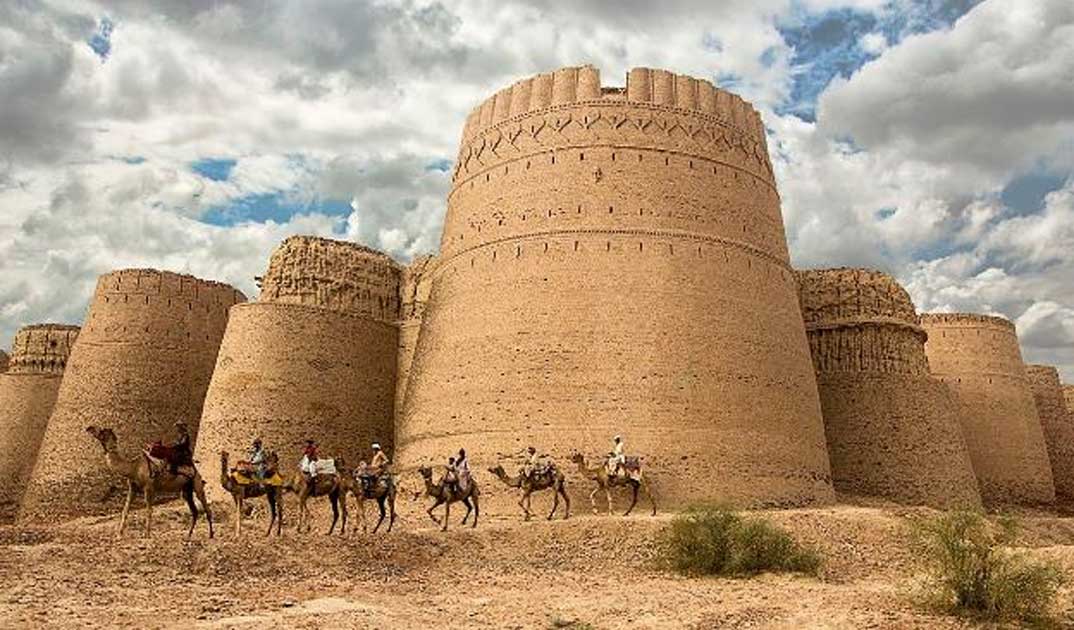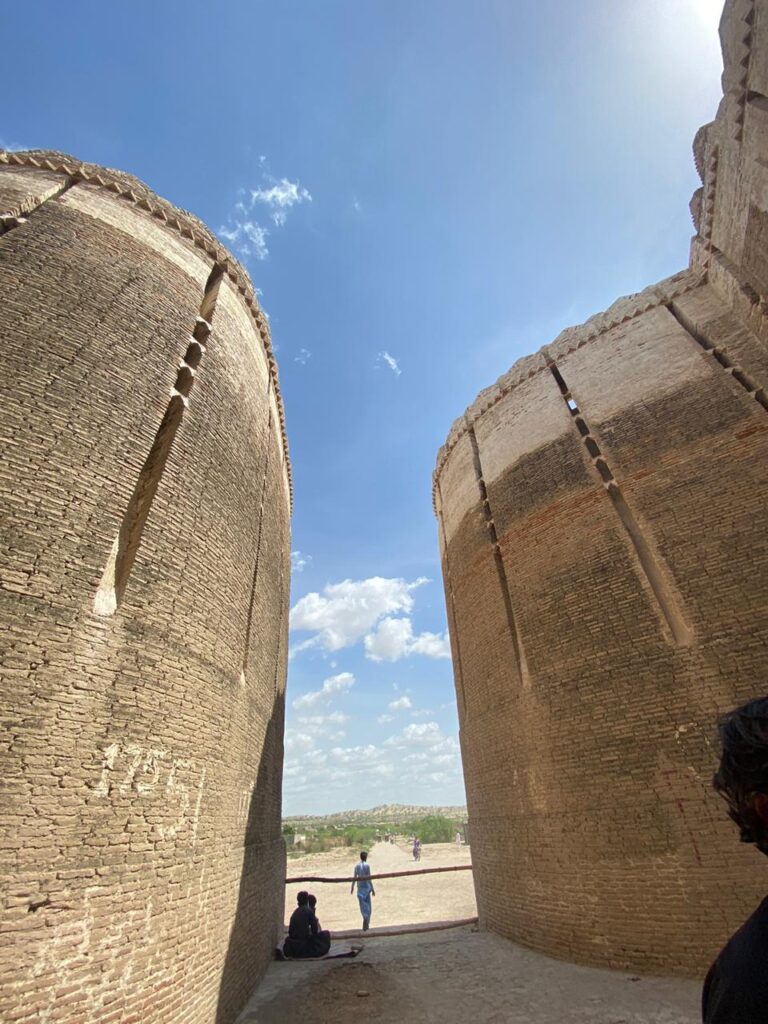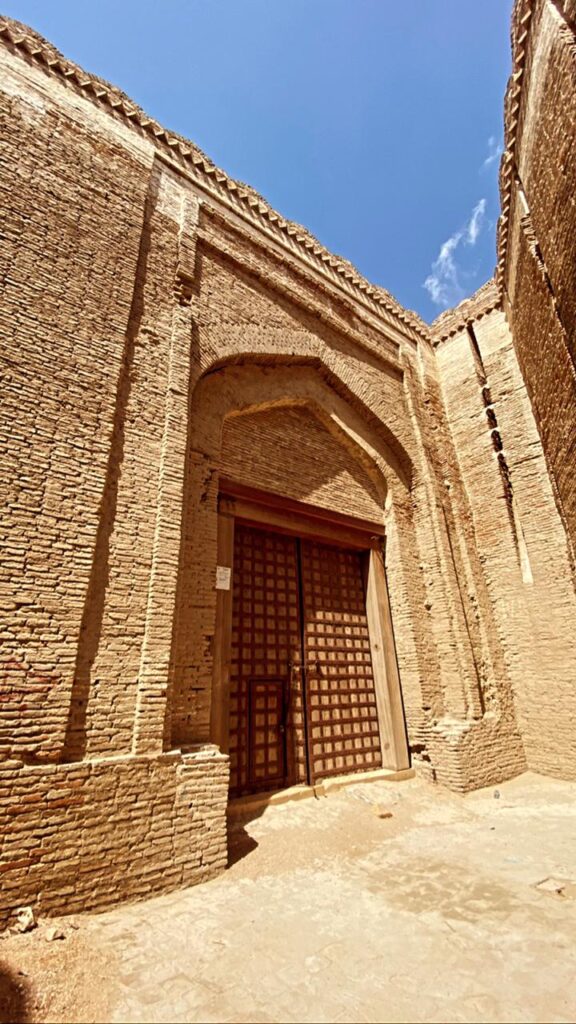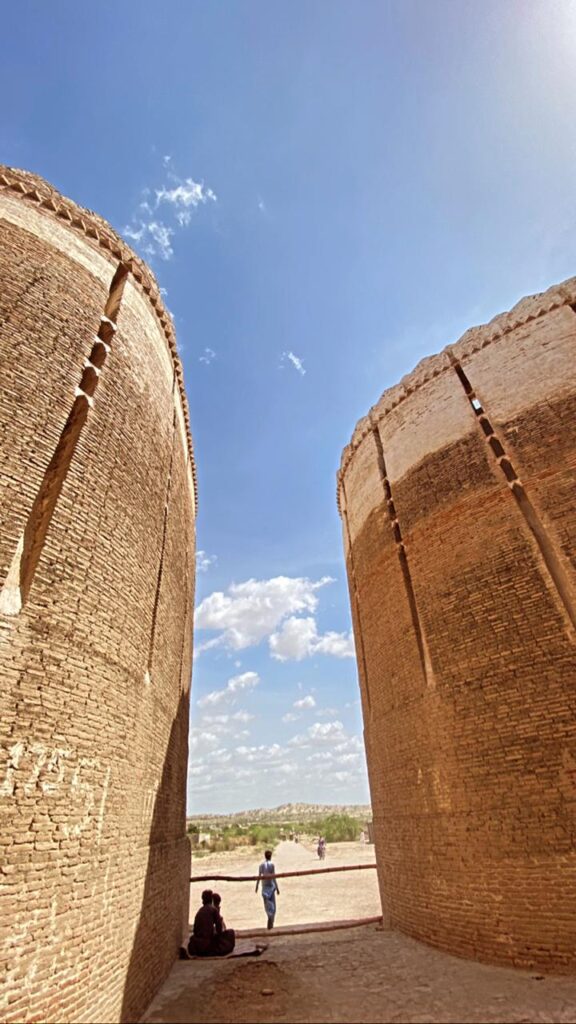Tharparkar, a barren desert land, scarce of water to many, a place to visit when it rains as it adorns a beautiful green cover after the monsoons, which attracts tourists to its famous Karoonjhar Hills. A beauty that it holds in the simplicity and vastness of its desert and the people inhabiting it, the abundance of naturals resources including granite and coal, its rich cultural diversity, and the smooth projection of inter-faith harmony. Most importantly being historically rich, is the attribute that shines like a jewel in the crown. An important seat for ancient Jain and Hindu religions, a hide and seek passageway for Mughal kings, Emperor Humayun to begin with being chased by Sher Shah Suri and as a pathway to reach up till Multan and Kabul by many more Mughal kings to follow, the Birthplace of Emperor Akbar, the beautiful land assigned to the famous folklore of Umer and Marvi, even believed that Sultan Mehmood Ghaznavi had navigated himself through the area of Runn of Kutch when it was devoured by the sea. The never-ending tales of history this land holds apart from the beauty it clutches, holding deep conversations with the soul.
Naukot Fort
Built-in 1814 by Mir Karam Ali Talpur, during the reign of Talpurs over Sindh, it was constructed as a display of power, to keep Sodha Chiefs under control, or according to Atkins, to show the power and authority of their rule by Talpurs. Whatever the reason for its construction, its vastness, grandeur, and superiority, from a faraway distance, standing high amidst the barren plains of Thar, is still evident while passing by, due to which it is also regarded as a Gateway to Mithi.
Historical background
The area of Thar during 1 st Century AD, consisted of the famous town of Parinagar. A port city with a population of 40,000 people, appears to have been a large flourishing town and a bustling center, for trade. An arm of Runn of Kutch nearby confirms of it has been a dwelling port city, one can still imagine the movement of boats consisting of merchandise from here. The decline of Parinagar is attributed to the land gaining on the sea and hence ceasing the Runn to be navigable. It vanished around the 11th century AD.
While the authority over the rest of Sindh was being juggled between Sammas, Arghuns, and Tarkhans, meanwhile Tharparkar for a long time was under the rule of Rajputs, who in the 11th century lost it to the Soomras, won by Sodhas. Soomras after having lost control over Thatta gained authority over Umerkot from the Sodhas, who were able to regain it after some time. Hence, Sodha chiefs from time and again, consistently remained in control of this vast desert, till the arrival of Kalhoras, followed by Talpurs and finally the British who took over.
In times of Talpur Rulers, Umerkot was under rule of Maharaja of Jodhpur, and other areas ruled by Sodha chiefs. A treaty was signed between the Maharaja of Jodhpur and Mir Fateh Ali Khan Talpur which maintained peace over the area till its use until 1813.
The command of Sodhas chiefs, however, dominant in other parts of Thar, excluding Umerkot, made an attempt to refuse the authority of Talpur Mirs, and refused to pay land tax to them, which they previously paid to their Kalhora chiefs. In order to exercise control over the mischievous activities of Sodhas, Mir Fateh Ali Khan was the first who started laying foundations of different forts across Tharparkar to keep an iron fist over the Sodha chiefs. Remains of most of these forts have vanished, however, traces of some can still be seen at places. After the death of Mir Ghulam Ali Talpur, Mir Karam Ali took over the reign in 1812. The construction of Naukot Fort is however attributed to the works of Mir Karam Ali Khan Talpur and termed as comparatively the newest and larger in construction from the other forts built in Thar.
According to SM Reikes “In order to take Thar under control, they (the Talpurs) built forts and spent a lot of money, where their regiments would stay and keep control over the vast area” There are different views regarding the purpose and usage of the fort. Primarily to keep enemies at bay, some historians also believe, that the ruling Mir, inspired by the simplicity of life in Thar, constructed it as his personal accommodation, which he used while his visit to Thar. However, it was constantly housing Talpur troops, safeguarding the area at all times.
Construction Dynamics
Consisting of a Shahi Darwaza (Grand Gate), Mukhi Darwaza, Banquettes and bastions, artillery area, and rooms for the residents as well as guards, an adequate source of water through wells, for the residents and family of Talpurs inhabiting this fort during their rule. The fort was well preserved and intact, still standing tall, boasting tales of its past grandeur.
Naukot fort is 63 km South of Mirpurkhas and attributed as one of the Desert forts. With an approximate length of 640 feet and width of 600 feet, It is constructed with baked bricks and mud mortar. The construction of the fort appears in the shape of a square, built in a way that Historians claim would have been difficult to fall under attack by enemies.
Two types of bricks have been used for their construction. One is 16.69.6 inches in size whereas the other is a tad smaller with a measurement of 16.68.6 inches in length. While standing on one of its high projecting towers, a view of the area far and wide can be taken into account. The Fort is located at a strategic place that serves to be the center of many crossroads.
Entering through the Shahi Darwaza, protected by 2 large towers, a narrow area of only 11.10 feet is left to pass through to get in. From its south, the fort consists of another square area outside the main fort, with a measurement of 40*48 feet from the inside, a highly secure area, guarded at all times. This smaller compound also houses the Mukhi door, which is hidden behind the 30 feet tall eastern tower, safely protected by it.
Mukhi Door is approximately 22 feet in height and 12 in width, leading to guard resting area built inside, who was probably responsible for allowing in visitors apart from guarding the door, making increasing the secure command over the entrance, as the troops stood on guard at all times. To further strengthen the entrance,12 feet wide walls ran through all four sides of the fort, containing the presence of guards to prevent the fort from attacks. According to a survey conducted in 1982, this area seemed to be damaged due to the accumulation of rainwater, later repaired.
Entrance to the fort goes through a 12 feet wide inner door and leads through a 20 feet wide covered passageway, which holds places for guards to sit and stairs to approach its bastions.
Traces of small rooms allowing no light or ventilation have been found beneath the protection walls. Constructed of bricks, 18*18 in size, close to the Southern wall, these rooms are believed to have been used as Barood Khaanas, for storage of ammunition and gunpowder. Some sources claim these rooms to be prison cells, due to the presence of metal bolts on the roof, but we do not have much evidence to support the idea. Construction of similar rooms has also been found in Ranikot Fort.
Historians have quoted that the guards and soldiers protecting the fort did not have particular uniforms. They used excellent guns and artillery. However, it took time to reload the guns.
The fort in time of its construction consisted of hundreds of embrasures with close proximity to each other, with a distance of approximately 8 feet between them, for aiming the guns while remaining undercover. The embrasures each measure 9 inches in height and 7 inches in width, not only to point guns but also to view the area for possible attacks. Due to lack of maintenance over a long period, most of the embrasures have diminished, except for one visible on one of the bastions near Mukhi Door. To welcome the rule of Mir Karam Ali Khan Talpur, canons were charged and fired from here.
The fort consists of a total of 9 bastions, four on each corner, two of which guard the entrance and the Mukhi door and three in the middle of Southern, Northern, and Western walls. All are semi-circular in shape, standing tall and strong, thick at the bottom, and taper down as they proceed in height. Also, consist of spillways for water.
The residents of the fort had ample drinking water available. Traces of natural running water found around the area support the idea. This area had the presence of passing Hakro river, which later changed its course. Signs of groundwater have also been found, due to the passing river in ancient times, which are now no longer drinkable due to their bitter taste. Evidence of a well has been found inside the fort which supplied water for its residents.
Naukot Fort consisted of a number of residential rooms, now in ruins. The walls of these residential quarters consisted of areas for storage, with designs of plaster on shelves and doors for beautification purposes. The rooms were strategically made, interconnected with one and other, and an outer door for entrance and exit. This arrangement was made for the protection of the residents. Historians claim that the ruling Mirs stayed in the residential rooms among which, Mir Sher Khan was a frequent visitor and many times held court inside the fort.
Inside the small passageways of the inner door are the guard’s rooms. To protect the main door at all times. These rooms have traces of mihrabs and windows 2*3 feet in size according to a survey conducted in 1959, now traces of window are gone.
Apart from being a display of strength and excellent safeguarding dynamics, the fort appeared to be a stronghold for the Talpur rulers who were frequent visitors and kept the area well under control. After the death of Mir Karam Ali, Mir Tharro took control, and later Mir Sher Mohd came to authority, who paid close attention to Thar. The arrival of the British marks the overtaking of the remaining forts, including Naukot. They deployed their Magistrates and Superintendents in the area, who was also given command of the forts. They further appointed Sodha chefs, on high ranks to look over the fort, a regiment of sepoys were deployed, Sodhas were given jobs, pieces of lands and land tax has wavered, hence they were able to reclaim their lost power and dignity in the area.
Picture credits Rabia Jilani
References:
All research material obtained from the personal Library of Pir Hussamuddin Rashdi.
Memoir on the Thur and Parkur, Districts of Sind by S.N Raikes. (1856),Indus Publications, Karachi (1977)
Thar, compiled and edited by Abdul Qadir Mangi, Reviewed by Dr G.A Allana, Thar Publication (1993)
Tareekh Raigistan, 1 st and 2 nd Edition, Sindhi Adabi Board, Hyderabad (1956) (1977)
Purano Parkar, Mangharam Ojha, Sindhi Adabi Board, Hyderabad (1966/1975/1988)
Sindh Ja Koata aein Qilaa, Ishtiaq Ansari, Sindhica Academy (1996)
The Antiquities of Sindh, Henry Cousens, Oxford University Press,London (1929/1975)




